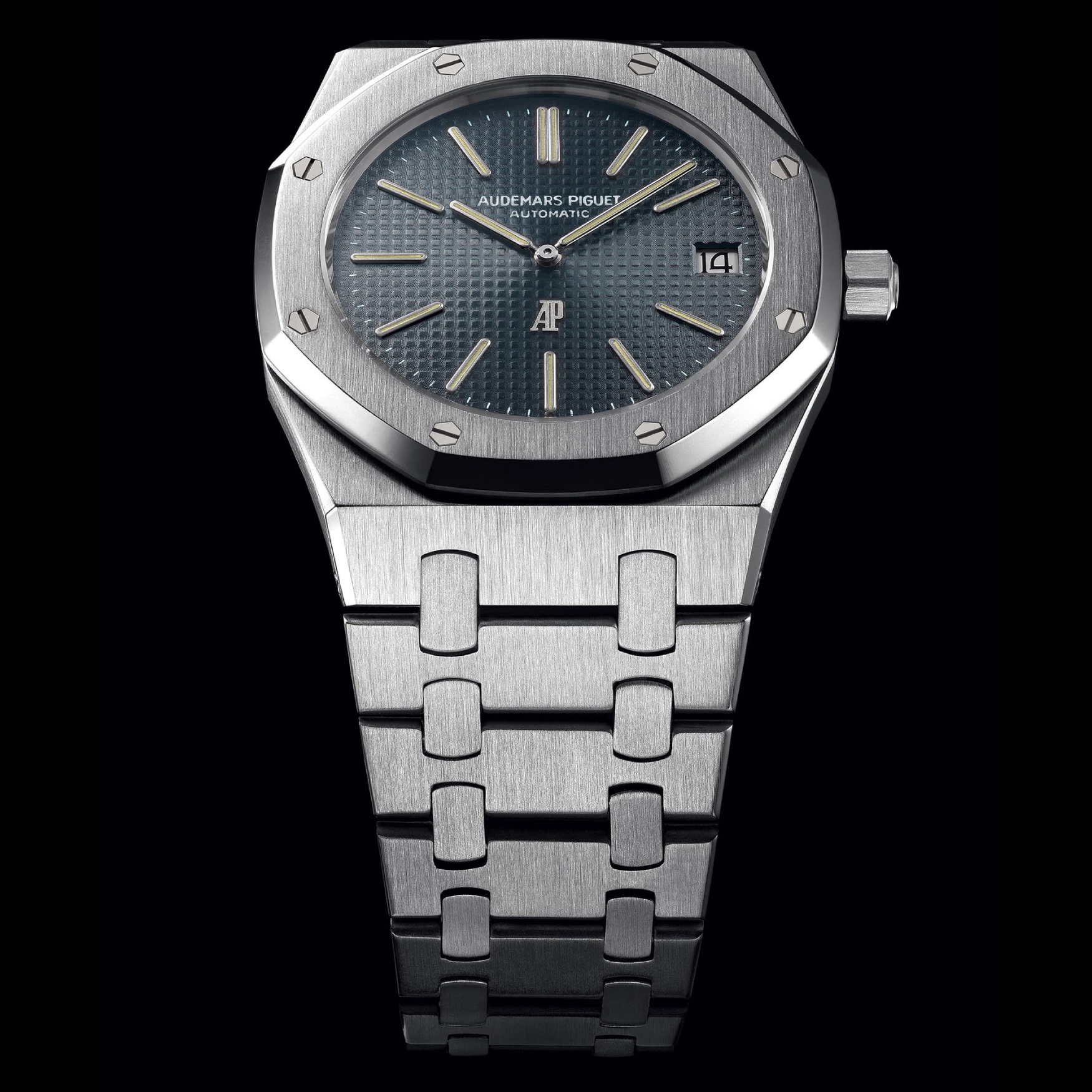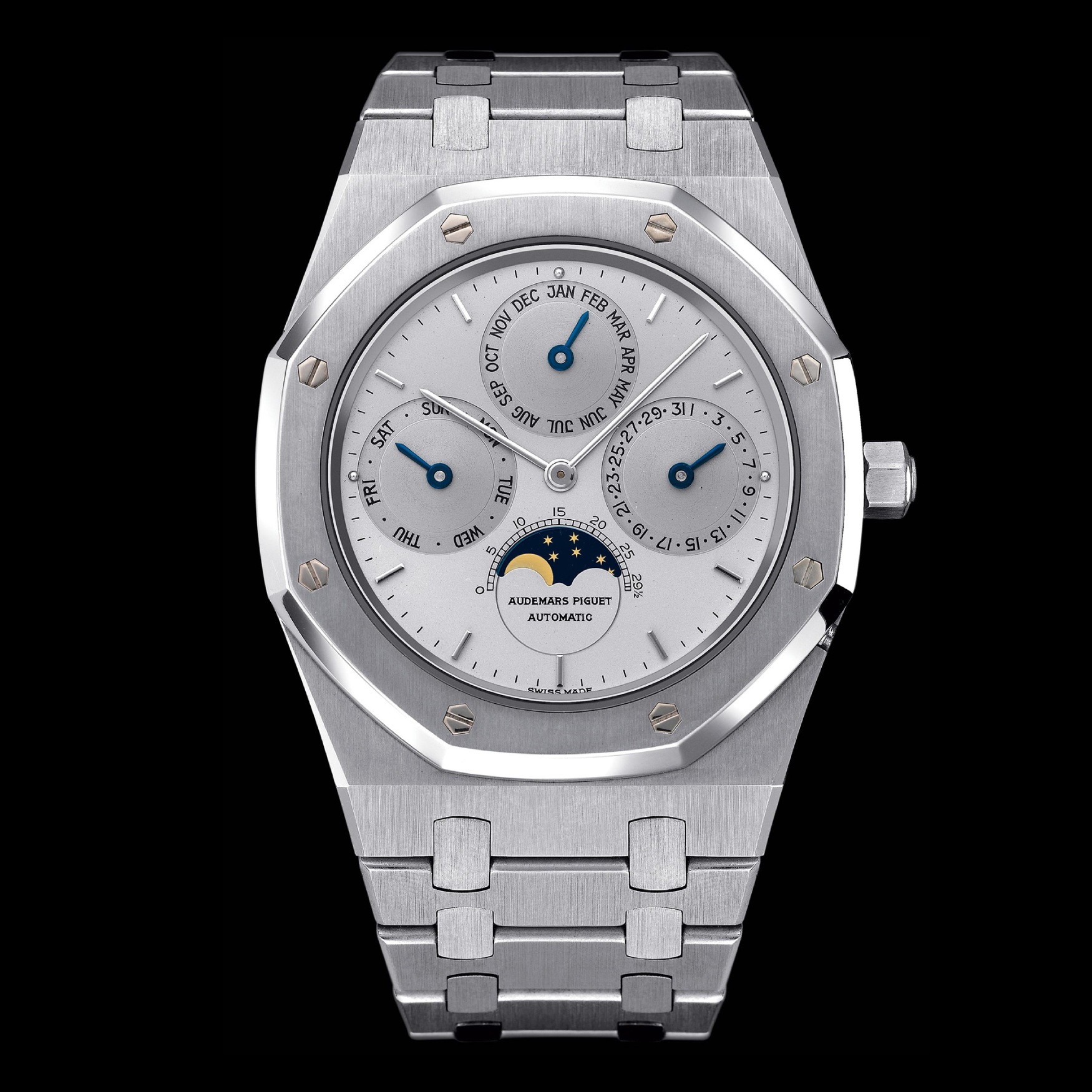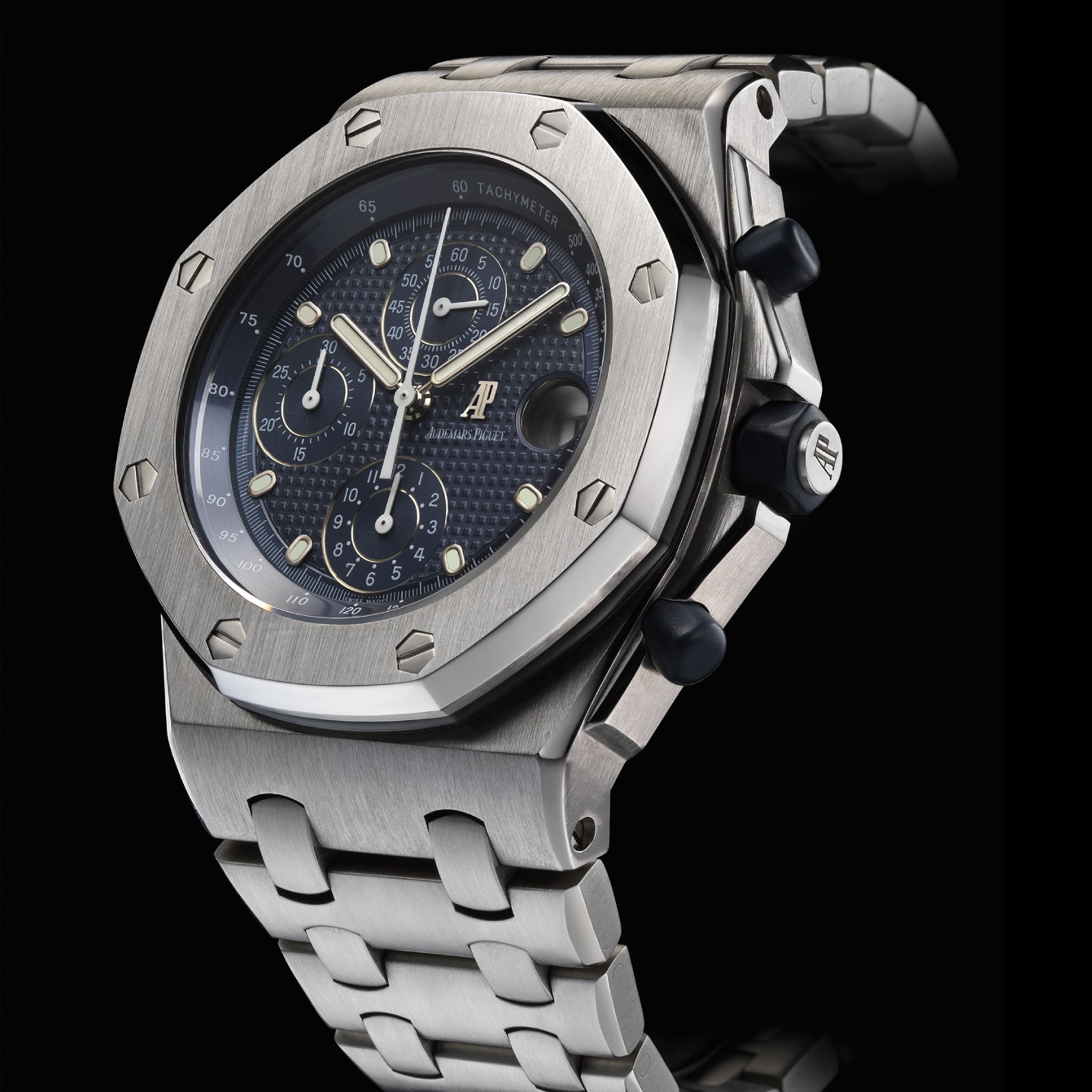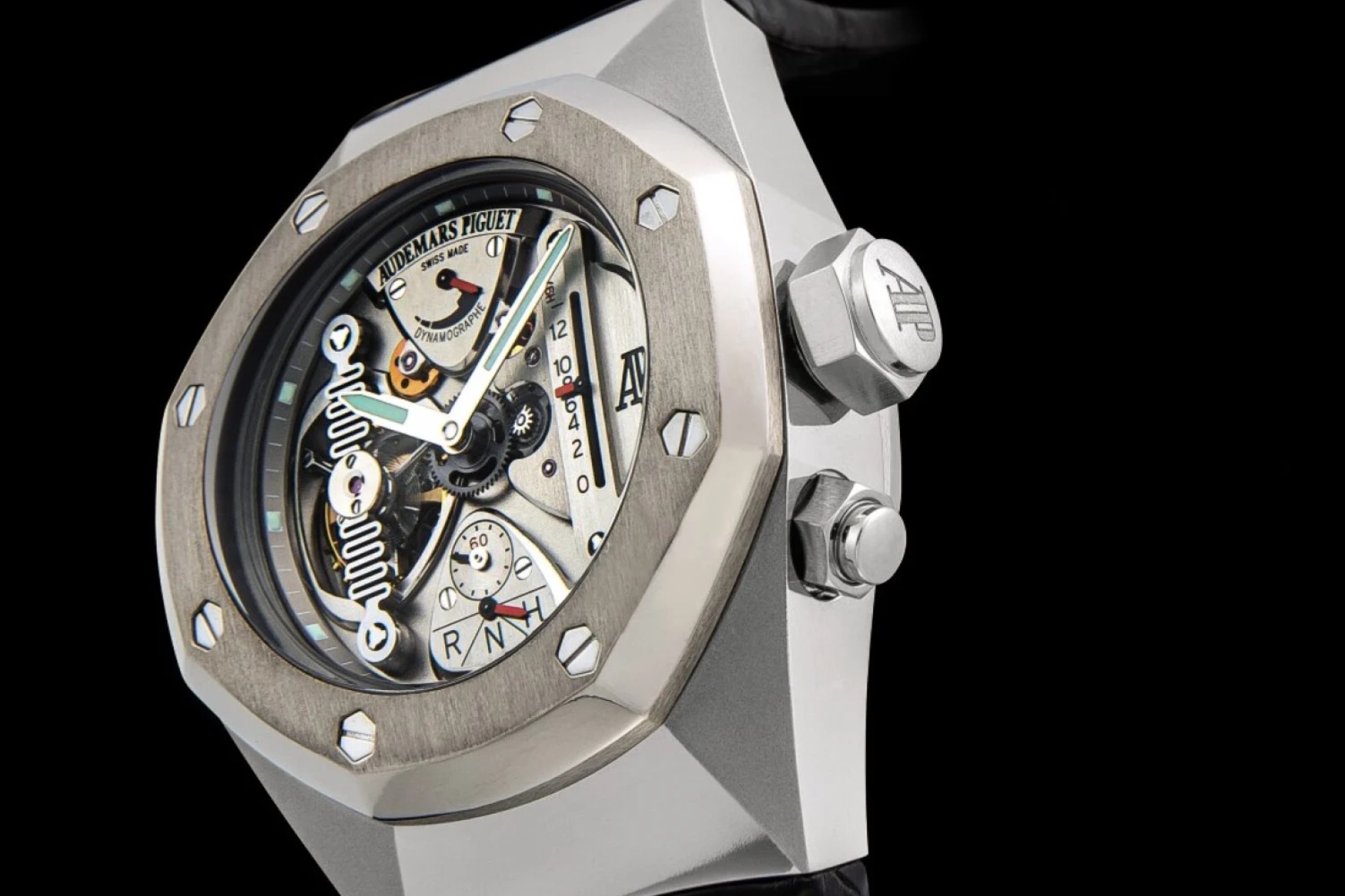The best Audemars Piguet Royal Oak from every decade
Borna BošnjakThe Audemars Piguet Royal Oak has always captured a sense of opulence. Not only has it become the quintessential luxury sports watch over the years, it was actually the watch that started the trend in the 1970s. Finding refinement in the crude inspiration of bronze divers’ helmets, the Royal Oak has gone from an oversized and arguably overpriced sports watch, charging more than that of a high-end gold watch in the ’70s, to nothing less than a cultural icon.
View this post on Instagram
Having recently released a slew of new models to commemorate the opening of AP House Milano, we thought we’d revisit the model’s most important references, picking one from each decade of its existence.
1970s – Royal Oak Jumbo ref. 5402ST
The first Royal Oak ever is where we begin, as it is only fitting. I don’t really need to tell you the whole story to explain how important this watch is for traditional watchmaking as a whole, but it is one worth telling. It was, of course, designed by Gérald Genta, prompted by then-AP managing director Georges Golay to create a new kind of sports watch. Whether the duo knew it at the time, I’m not sure, but the ultra-expensive A series that debuted created a whole new trend, one that is still very much in force today. The 5402ST, the actual first-ever reference, sported a 39mm case and the JLC 920-derived Calibre 2121. It was (and still is) a remarkable movement, measuring in at 3.05mm, with a rail-mounted, 21k gold rotor, and Patek Philippe’s Gyromax balance spring.
1980s – Royal Oak Perpetual Calendar ref. 5554
For the next entrant, we jump forward more than a decade to 1984, and the introduction of the perpetual calendar reference 5554. It was the first-ever Royal Oak with a perpetual calendar, continuing the brand’s trend of not displaying a leap year indicator on the dial – something that will change in future models. What stands out the most (or least, depending on how you look at it), is the wonderful simplicity of the complication indicators. There’s nothing on the dial that would be superfluous, and the branding is neatly integrated into the lower portion of the moonphase. Hell, I’d say the branding isn’t even necessary here considering the instantly recognisable case shape. Nevertheless, the real interest for watch nerds will be on the movement side of things, as this remarkable watch measures in at only 7.5mm in height and 39mm in diameter, identical to the original Royal Oak. The Calibre 2120/2800 first saw use in the ref. 5548 that is often credited with saving the brand from the quartz crisis, fitting a Dubois-Dépraz manufactured QP module to the ultra-thin JLC 920 ébauche, making it the world’s thinnest automatic perpetual calendar in the world.
1990s – Royal Oak Offshore ref. 25721
Though certainly sporty for their time, the two references listed thus far were elegantly refined. The Royal Oak Offshore, launched at Baselworld in 1993, was never meant to continue that trend. Whether you believe the story of Genta publicly denouncing Emmanuel Guiet’s design at the show or not, its nickname was well-deserved. “The Beast” measured in at 42mm in diameter, with a case reminiscent to a 5402 on steroids, at the same time sprouting a couple of additional pushers to go with the Dubois-Dépraz chrono module-equipped calibre within. The Offshore certainly served its purpose, reinvigorating Audemars Piguet in the eyes of the nepo babies and cashed-up youngsters the brand targeted in the first place, eventually landing on the wrist of machismo icons like Arnold Schwarzenegger, even evolving into some more refined examples in its 30-year existence. Nevertheless, the original Beast, the reference 25721, will always be the one that started it all, no doubt partially responsible for the emergence of large watches in the ’90s and early ’00s.
2000s – Royal Oak Concept Watch 1 ref. 25980
A new material or breakthrough complication may be a more common occurrence these days, but it was a really big deal in the early 2000s when AP launched the very first Royal Oak Concept. Celebrating the RO’s 30th anniversary, the Concept retained the octagonal bezel that’s become synonymous with the model, only subtly nodding to other recognisable features of the collection. The reference 25980 had two big claims to fame. The first, its alacrite 602 case – a forged, cobalt-based alloy with remarkable hardness (around 430 on the Vickers scale, whereas steel comes in at 170). The other was the Calibre 2896, matching the bezel with its titanium construction, and integrating a Renaud & Papi-developed dynamographe complication that would indicate mainspring torque in real time. With a spring-like bridge holding the tourbillon, the 2896 was resistant to 50Gs of force, and allowed the user to select between three crown modes – winding, neutral and time-setting.
2010s – Royal Oak RD#2 Perpetual Calendar Ultra-Thin
From a 44mm, avant-garde behemoth, to a slender beauty that honours Audemars Piguet’s history of ultra-thin watchmaking. Introduced as a concept in 2018 before entering series production a year later, the Royal Oak RD#2 is only 6.3mm in height (being the thinnest automatic perpetual calendar in the world), thanks to the 2.89mm-thick Calibre 5513. If the movement looks familiar at first glance, that’s because it is – the 5513 is based on AP’s famous 2120, though heavily reworked to get it as thin as it is. Rather than AP’s “regular” perpetual calendar in 41mm, the RD#2’s 5513 incorporates the mechanism in a single plane with the movement, adding less than half a millimetre to the base calibre, instead of sitting on top of it. It achieves this by using the dial for structural rigidity and utilising a 48-month wheel to indicate leap years, allowing AP to remove the leap year cam that would engage a more standard 12-month disk. Yes, the water resistance is lacklustre for a reference that stems from a sports watch at just 20 metres, and the 41mm diameter may make it wear really flat, but who cares?
2020s – Nothing… yet
Whether it’s my fear of recency bias or for the actual fact that no groundbreaking new Royal Oaks have been released in the last four years, I’m not quite sure. I am sure that I’ll have a definitive answer for you once Christmas of 2029 rolls around, but until then, best I can do is a list of a couple of front-runners.
For starters, we can’t forget the Royal Oak Jumbo for Only Watch in 2021, with a titanium case and a first-ever BMG bezel for AP. Not only was it a fitting send-off for the reference 15202, it also ushered the era of further material experimentation, specifically the palladium-based bulk metallic glass bezels. The name is somewhat misleading though, as the material is actually a metal alloy with ultra-high hardness and reflectiveness. While such a small change may not be as appreciated as some other tech advancements on this list, the mere fact that the watch fetched CHF 3.1 million at the auction is enough to earn it a spot in my book.
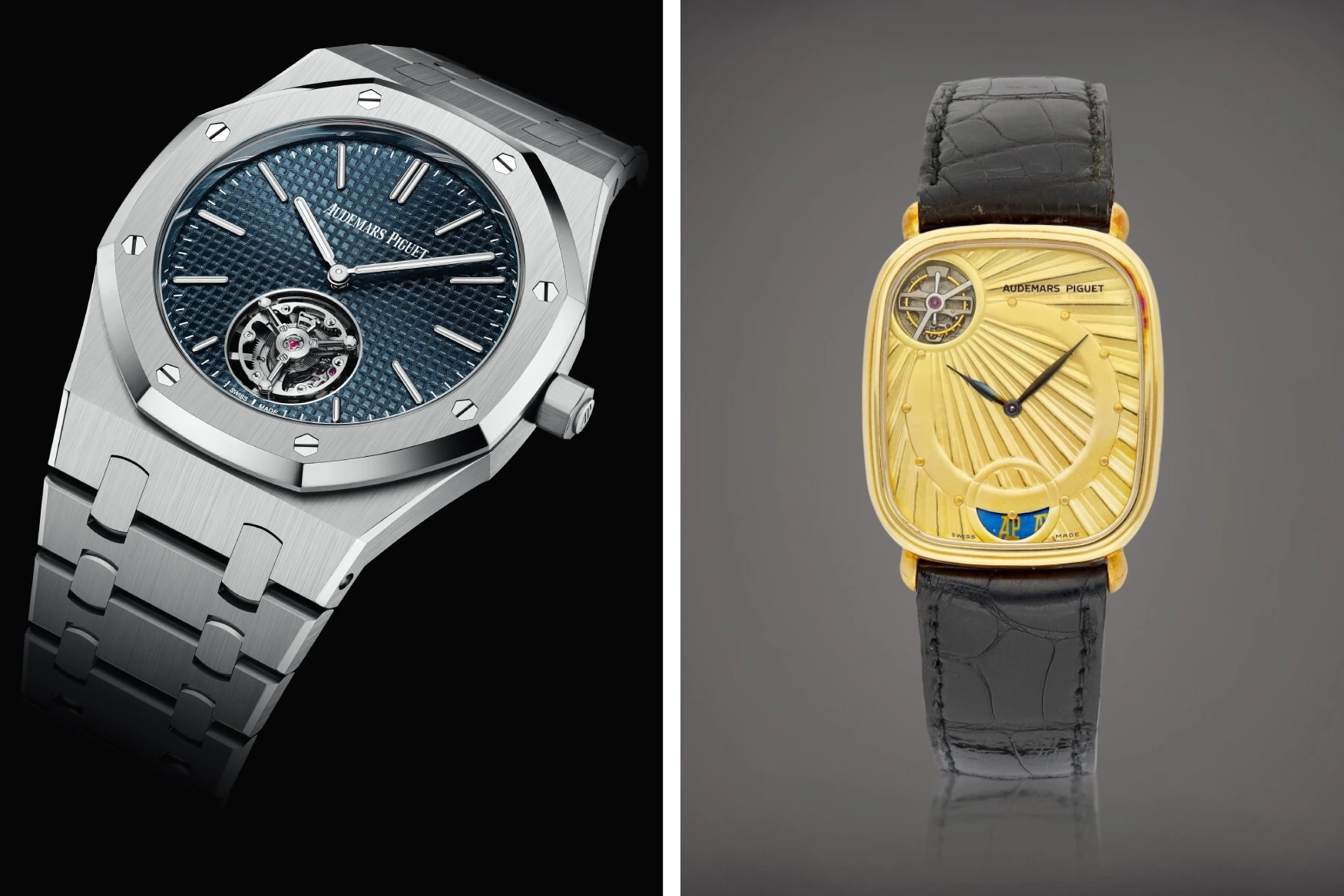
Next, we’ve got the RD#2’s follow-up in the form of a Royal Oak Jumbo with a flying tourbillon nestling in at 6 o’clock. It tributes the brand’s introduction of the Tourbillon Automatique, the world’s first self-winding tourbillon, in 1986, and though the original wasn’t a Royal Oak, the dial-side tourbillon lineage remains with the RD#3. It was also one of the headliners celebrating the Royal Oak’s 50th anniversary, though it’s by no means the most groundbreaking Royal Oak ever, so it doesn’t quite capture the top spot.
Despite this, my heart keeps pulling me towards one watch, and it’s the Royal Oak Perpetual Calendar in blue ceramic. Now, if you’ve read any article of mine, chances are I’ll wax lyrical about smaller, vintage (style) watches, so why on Earth would I pick a bright blue 41mm Royal Oak? Had I never experienced this watch in person, I likely never would have, but seeing those ceramic surfaces and the Grande Tapisserie sunburst dial, I was blown away. Ceramic can often feel a tad dinky, especially when brightly coloured, almost appearing plasticky. This was the complete antithesis to any arguments I could’ve had against it. It was big and brash, and it wasn’t sorry about it, and is in my eyes one of the best embodiments of what the Royal Oak stands for these days. And yet, thanks to the Calibre 5134, it sits at only 9.5mm in height, sharing the lineage of the great 2120, with the awesome ruby rollers for the rotor and aventurine-backed moonphase.






